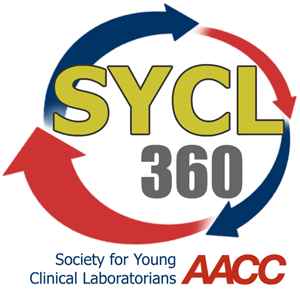Welcome to SYCL SnapShots, a new feature in CLN describing essential skills and practices for effective laboratory management. Here, members of AACC's Society for Young Clinical Laboratorians (SYCL) present a snapshot of a topic, such as business basics, data analysis and statistics, and online tools. For more information on SYCL, please visit our pages on AACC's website under Members/SYCL.

Christopher McCudden, PhD
SYCL Chair
The Ottawa Hospital
Ottawa, Ontario, Canada
Email: [email protected]
An Introduction to Practical Statistical Applications and Software Tools
By Joshua Bornhorst, PhD, DABCC, FACB, and Steven Post, PhD
Statistics! Just the mere mention of the word can strike fear, loathing, and dread in the hearts of some people. However, statistics is a key competency for laboratory professionals, both in normal clinical laboratory operations and in research. Not only does statistics provide the means to objectively evaluate data, it also summarizes data in a universal language that is meaningful to others.
But fear not! Computer software programs are available that can help you overcome your apprehensions about statistics. Three types of programs are used in clinical laboratories: those that perform general statistical analyses and others that analyze laboratory methods and quality control (QC) data.
Taking the Plunge
First, you need to determine which type of software program is appropriate for the analysis you seek to perform. For example, a basic spreadsheet program may be sufficient for the simple description of Gaussian data, such as means, standard deviations, and coefficient of variations, also known as standard deviation from the mean. Other common applications include evaluation of different data sets and/or methods. Examples include the t-Test or F-Test for evaluating the significance of potential differences between the means or variance in quantitative data sets, confidence intervals, descriptors of correlation and linear regression of methods, and comparisons of multiple groups using one-way analysis of variance (ANOVA). Common spreadsheet software, such as Microsoft Excel, also can handle any of these analyses.
Analyzing Clinical Research Data
More sophisticated programs may be required for research or clinical data. In these settings, statistical analyses include nonlinear or multivariate regression, standard errors of means, two-way ANOVA, and Chi-square analysis for detecting differences in frequencies. Advanced programs often contain tests that check whether data sets meet required criteria for further statistical analysis like Gaussian distribution. These programs also facilitate another critical component of designing clinical investigations known as power analysis and can be used to determine the number of subjects required to detect a significant effect (1).
The Fine Points of Selecting Software
Other factors that you need to consider in selecting a software program center on specific requirements for data input and analytical output. For example, will the software need to interface with existing databases and/or specific hardware to acquire data, or will the data be available as a common file type, such as a CSV file? Programs also differ in their ability to graphically represent statistical data in different formats, including regression plots, bias plots, dot plots, histograms, and box/whisker plots. Many journals have specific guidelines for statistical analysis and representation. For example, Clinical Chemistry favors Deming regression analysis (2).
Specialized Programs for Lab Data
In our experience, some widely available statistical programs have proven helpful for analysis of laboratory data (See Table, below). Other powerful statistical analysis programs available within many university and industrial settings are SAS/JMP and SAS/STAT (online), MATLAB (online), IBM SPSS (online), as well as the free software package called R (online).
|
General Statistical Software Programs
Excel (online)
Excel offers several basic statistical analysis and graphing functions, as well as several downloadable plug-ins for additional analysis. Major strengths of this program are its wide-spread availability and familiar user interface.
GraphPad Prism (online)
GraphPad Prism offers an interface that guides you through using an extended range of statistical testing and graphing options. In addition to Prism, GraphPad offers a program called StatMate to determine sample size in the experimental design.
SigmaPlot (online)
SigmaPlot readily combines statistical data analysis with graphing capabilities.
|
As clinical laboratory professionals, we also have a variety of targeted tools and guidelines for method and QC data evaluation in our arsenal. Useful textbooks, lectures, programs, and courses are accessible on the AACC website. The Clinical and Laboratory Standards Institute (online) also provides widely accepted guidelines for evaluating laboratory data. These are especially useful for evaluating and validating methods, as well as establishing and evaluating reference intervals. Some commercially available programs tailored toward application of these guidelines in the clinical laboratory setting include EP Evaluator (online), StatisPro (online), and CBstat.
Evaluating QC data represents a massive topic on its own. A wide variety of programs are contained within the operating systems of analytical instruments, laboratory middleware, and laboratory information systems. Bio-Rad Unity (online) and Westgard QC, Inc. (online) are other resources for evaluating QC performance.
 SYCL360 is a podcast designed to keep
SYCL360 is a podcast designed to keep
SYCL members up-to-date on the group's activities, highlight
recent events, as well as promote communication among members.
Watch the podcast on AACC's website to learn more!
Final Disclaimer
Clearly, this brief article cannot present a complete list of concepts or resources for statistical analysis of laboratory data. Therefore, we leave you with a saying attributed to Mark Twain concerning the persuasive power of numbers: "lies, damned lies, and statistics." But in all seriousness, deepening your understanding and familiarity with statistical concepts and tools will help improve the quality of your laboratory and research results, as well as your ability to appreciate and critique the work of others.
REFERENCES
- Pocock SJ, Hughes MD, Lee R. Statistical problems in the reporting of clinical trials. N Engl J Med 1987;317:426–32.
- Clinical Chemistry. Information for authors. www.clinchem.org/site/info_ar/info_authors.xhtml (Accessed January 2013).

Joshua Bornhorst, PhD, DABCC, FACB, is associate professor in the Department of Pathology, University of Arkansas for Medical Sciences, Little Rock.
Email: [email protected]

Steven Post, PhD, is professor and director of experimental pathology in the Department of Pathology, University of Arkansas for Medical Sciences, Little Rock.
Email: [email protected]
Disclosure: The authors have nothing to disclose.